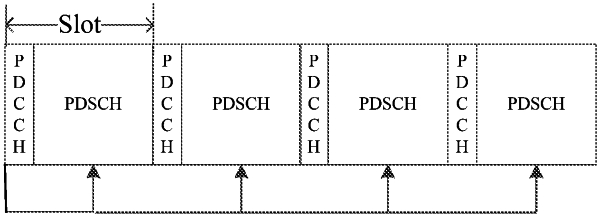| CPC H04L 1/1819 (2013.01) [H04L 5/0051 (2013.01); H04W 72/0446 (2013.01); H04W 72/23 (2023.01)] | 20 Claims |

|
1. A method for downlink data transmission, applied to M physical downlink shared channel (PDSCH) transmissions, where M is larger than or equal to 2, the method comprising:
determining, by a terminal device, a transmission configuration indicator (TCI) state corresponding to PDSCH transmission based on downlink control information (DCI); and
determining a redundancy version (RV) value corresponding to the PDSCH transmission based on the DCI, wherein the TCI state and the RV value are used for the terminal device to receive downlink data by the M PDSCH transmissions,
wherein the determining, by a terminal device, a transmission configuration indicator (TCI) state corresponding to PDSCH transmission based on downlink control information (DCI) comprises:
determining, by the terminal device, K TCI states based on the TCI state indication information in the DCI, wherein K is greater than 1; and
determining, according to a code division multiplexing (CDM), group to which a DMRS port belongs, the TCI state corresponding to each DMRS port in each PDSCH transmission in time domain from the K TCI states,
wherein the DMRS port is indicated by the antenna port indication information in the DCI, wherein the determining, according to a code division multiplexing (CDM), group to which a DMRS port belongs, the TCI state corresponding to each DMRS port in each PDSCH transmission in time domain from the K TCI states, comprises:
determining the TCI state corresponding to the DMRS port in each PDSCH transmission in time domain according to a third preset strategy, when the number of CDM groups is 1, wherein the third preset strategy comprises at least one of:
if M is larger than or equal to K, TCI states of the K TCI states are sequentially used in respective PDSCH transmissions from a first TCI state of the K TCI states, and after the K TCI states are all used, the K TCI states are used repeatedly in sequence for the PDSCH transmissions from the first TCI state; and
if M is less than K, a number of TCI states is selected from the K TCI states, wherein the number of the selected TCI states is same as the transmission number of the downlink data in time domain, and the selected TCI states are sequentially used in respective PDSCH transmissions.
|